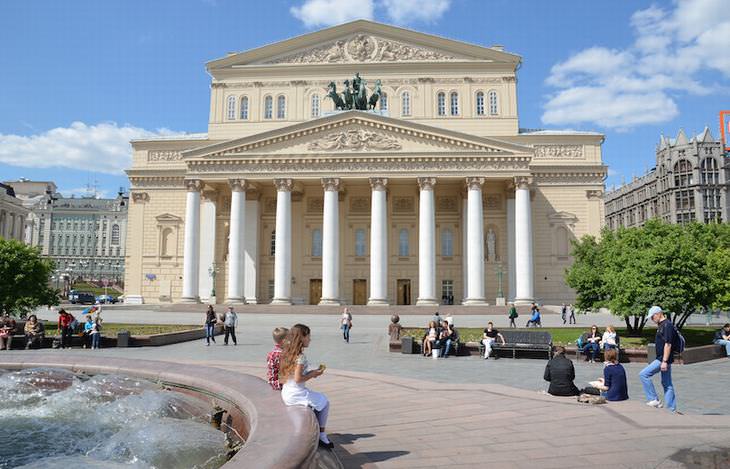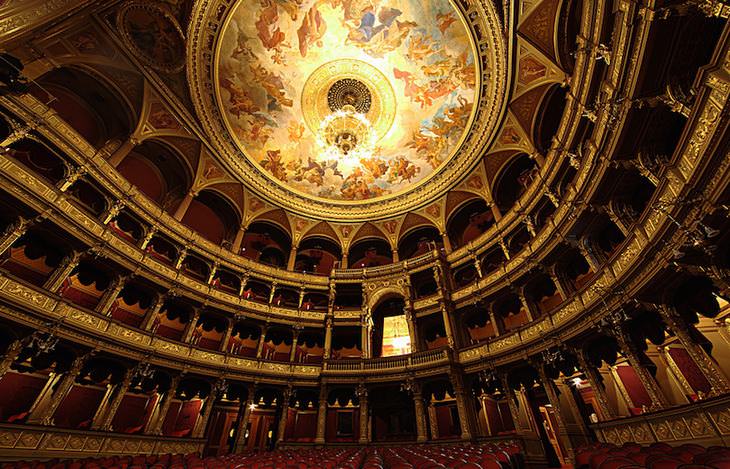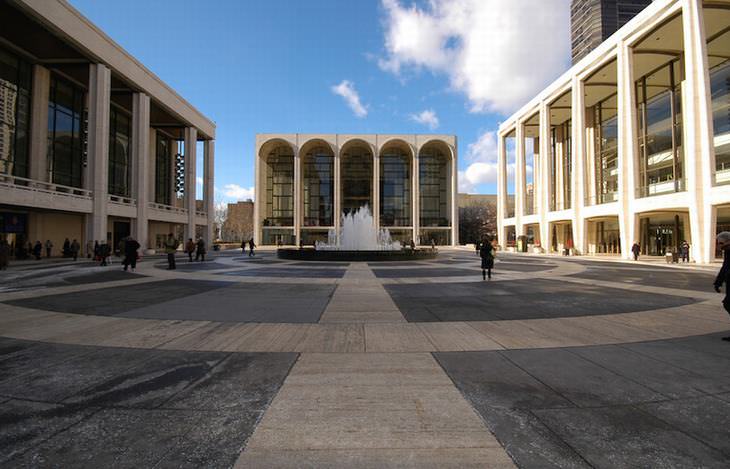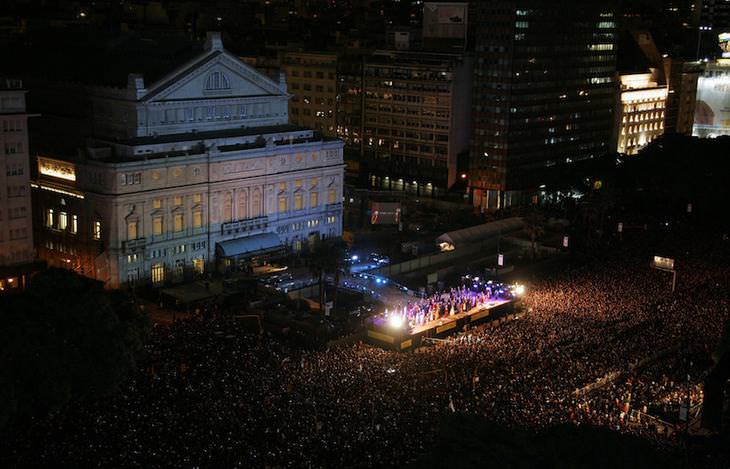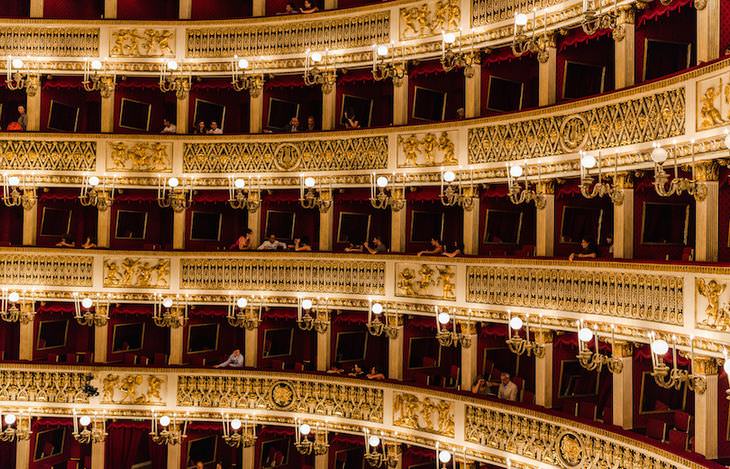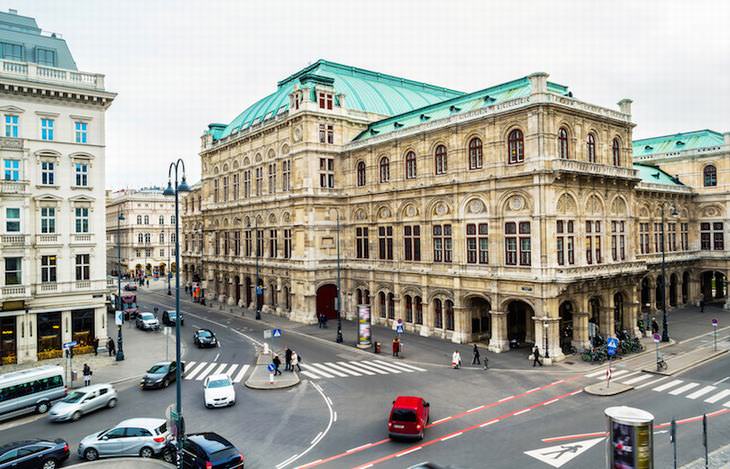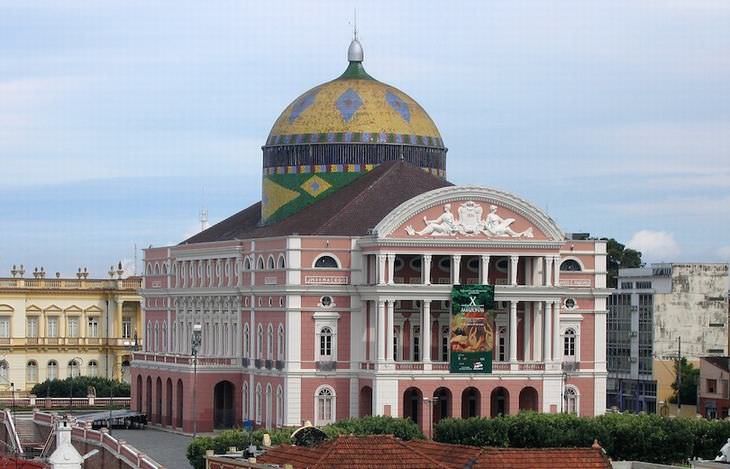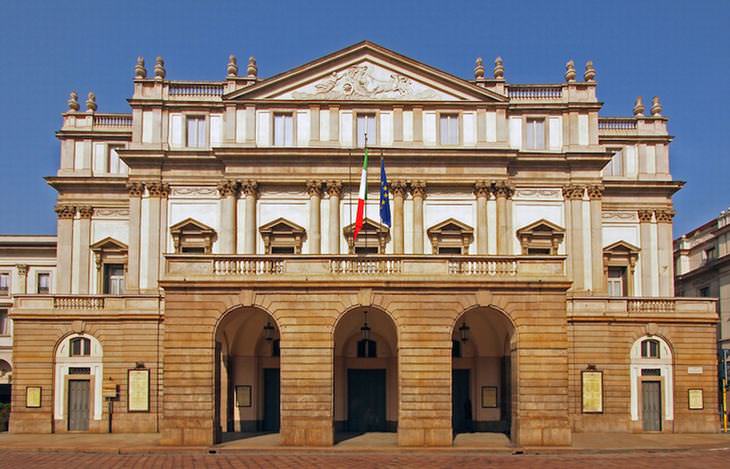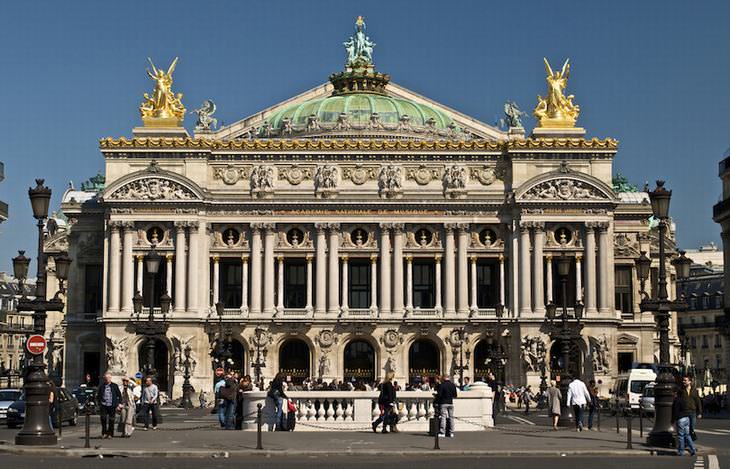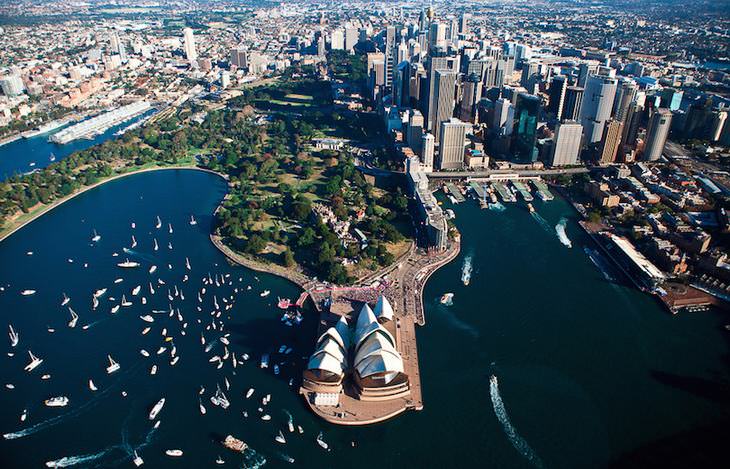10. Bolshoi Theater
Moscow’s Bolshoi Theater started off life as an unassuming brick building following the completion of its construction at the end of the 1790s. Less than 35 years later, however, the theater was completely revamped by architect Andrei Mihailov. Its neoclassical architectural style is complemented by Oriental carpets, silk-damask walls and velvet-upholstered chairs in its interior. The theater was also renovated in 2011 at a rumored cost of $1 billion.
9. Hungarian State Opera House
Completed in 1884, the Hungarian State Opera House is considered to be the finest accomplishment of architect Mikos Ybl. It was built in the Neo-Renaissance architectural style, and its interior is decorated with paintings and sculptures by some of Hungary’s most acclaimed artists. There’s also a giant, ornate bronze chandelier present. This opera house is also world-renowned thanks to its great acoustics.
8. Metropolitan Opera House
Colloquially referred to as the Met (indicative of just how well-known it is around the world), New York City’s Metropolitan Opera House is famous for the elaborate and innovative productions that are put on there, in addition to some of the most memorable operatic performances ever to take place. What’s more is that the Met features excellent acoustics and fantastic sight lines for an unforgettable night out. It opened in 1966, and was designed by Wallace K. Harrison.
7. Teatro Colon
The stunning Teatro Colon in Buenos Aires first opened back in 1908 with a performance of Verdi’s Aida. In contrast to many of the other opera houses on this list, this opera house was actually designed by a succession of different architects, which might explain why it has such an eclectic appearance. It was the world’s largest opera house for 65 years prior to the construction of the Sydney Opera House back in 1973, with a capacity to seat 2,500 and standing room for a further 1,000. The legendary tenor, Luciano Pavarotti, once praised the opera house for its “perfect acoustics”.
6. Teatro di San Carlo
Welcome to the oldest continuously active opera house in Europe. Naples’ Teatro di San Carlo was built by King Charles III of Spain (aka. Charles VII of Naples), and is actually connected to the city’s Royal Palace. It was completed in 1737, and its interior is adorned with gold leaf and red velvet. Its horseshoe-shaped seats are spread across six tiers, with an extravagantly-decorated royal box jutting out at the rear of the house. The theater underwent a multimillion-dollar renovation in 2010.
5. Vienna State Opera
More commonly known as the Staatsoper, the Vienna State Opera House was completed in 1869, and opened with a performance of Mozart’s Don Giovanni. It was designed by Eduard van der Nüll and August Sicard von Sicardsburg, and was built in the Neo-Renaissance architectural style. Sadly, bombs fell on the opera house during World War II, and it wasn’t completely restored until 1955. The opera house is known for its standing-room-only tickets that are available until minutes before a performance.
4. Teatro Amazonas
Located in the Amazonian city of Manaus, the Teatro Amazonas was built during the heyday of the rubber trade, and incorporated materials from all over the world. For instance, the furniture came from Paris, the marble is from Italy and the steel came from England. The exterior’s dome is covered with 36,000 ceramic tiles painted in the colors of the Brazilian national flag. The opera house operated for just three years before it closed its doors for the next 90 years, and this was because the rubber trade disappeared from Manaus, causing the city to lose its main source of income.
3. La Scala
Known the world over, the Teatro alla Scala, or La Scala for short, has been one of the world’s premier opera houses ever since it opened back in 1778. Performing at the neoclassical opera house is often seen as a trial by fire, because its amazing acoustics reveal every single flaw in a singer’s performance. It’s not uncommon for even the most famous artists in the world to be heckled from the loggione, which is the gallery above the theater’s boxed seats.
2. Palais Garnier
This fabulous opera house is the setting for the Phantom of the Opera, one of the most famous musicals ever produced. It was designed by architect Charles Garnier and completed in 1875. The Beaux-Arts style building houses a seven-ton crystal chandelier at its center, together with ornate marble friezes and statues depicting figures from Greek mythology. Palais Garnier, however, has notoriously poor sight lines, and the Place de la Bastille is now more commonly used by the Paris Opera for its performances.
1. Sydney Opera House
Welcome to undoubtedly the most famous opera house in the world. It’s regarded as one of the architectural masterpieces of the 20th Century, and it was designed by Danish architect, Jørn Oberg Utzon. In spite of its name, the Sydney Opera House actually comprises multiple performance venues, such as a multi-purpose room, a concert hall and an outdoor venue for performances that take place during the Australian summer.

